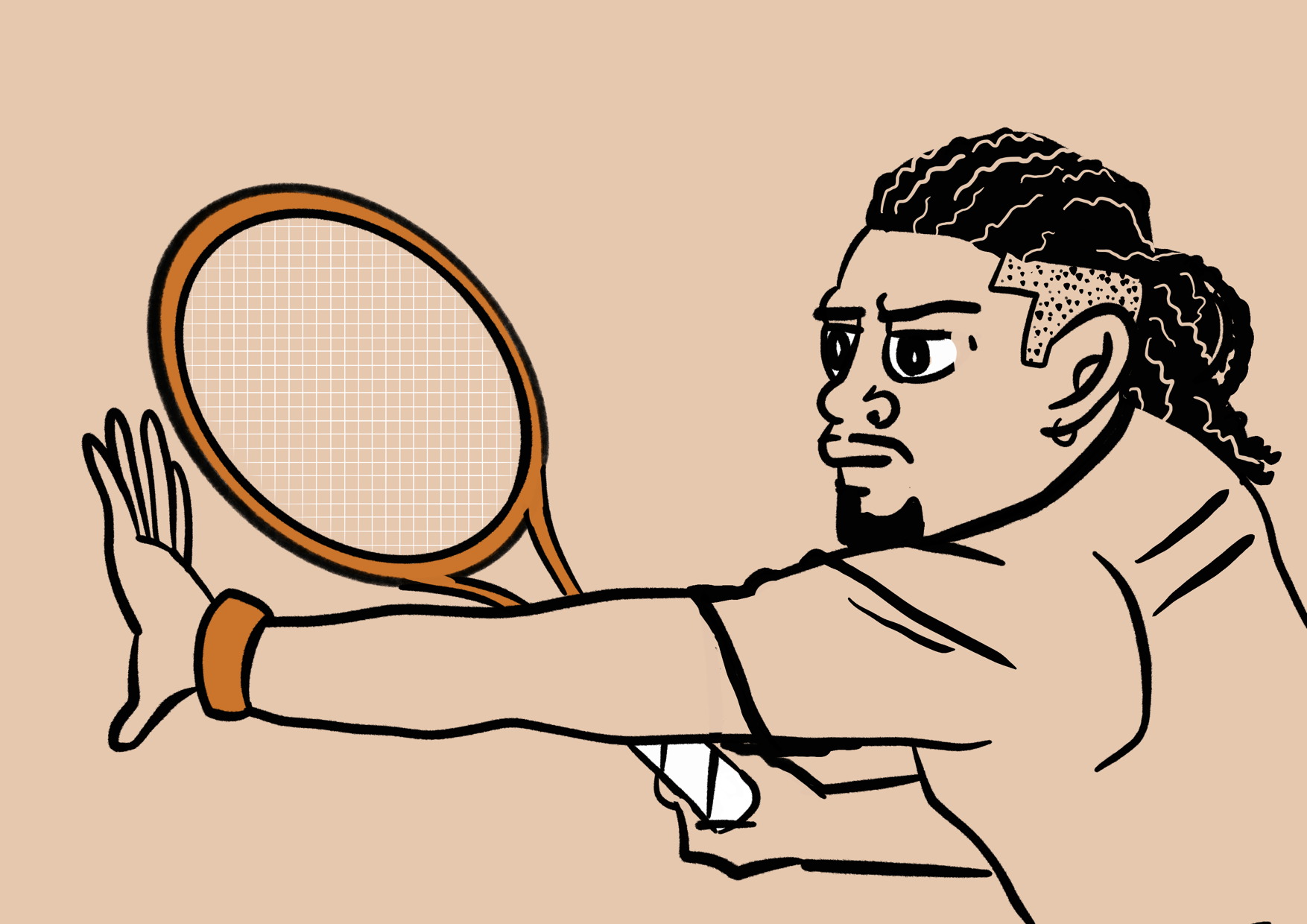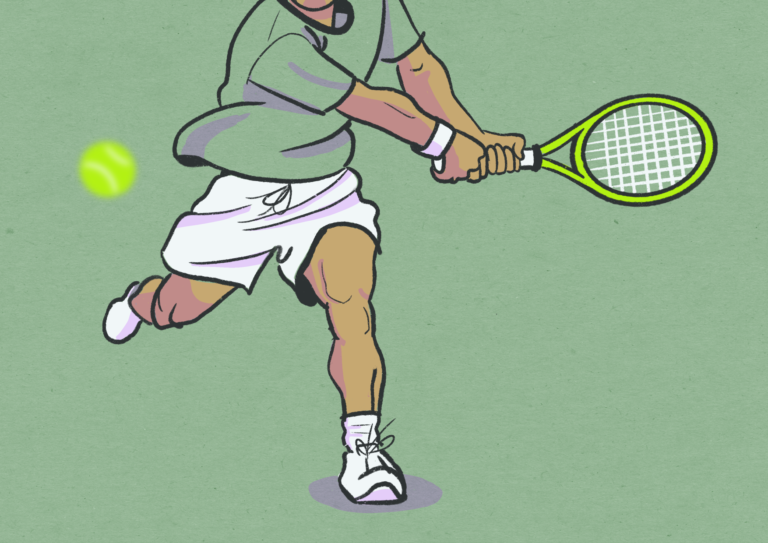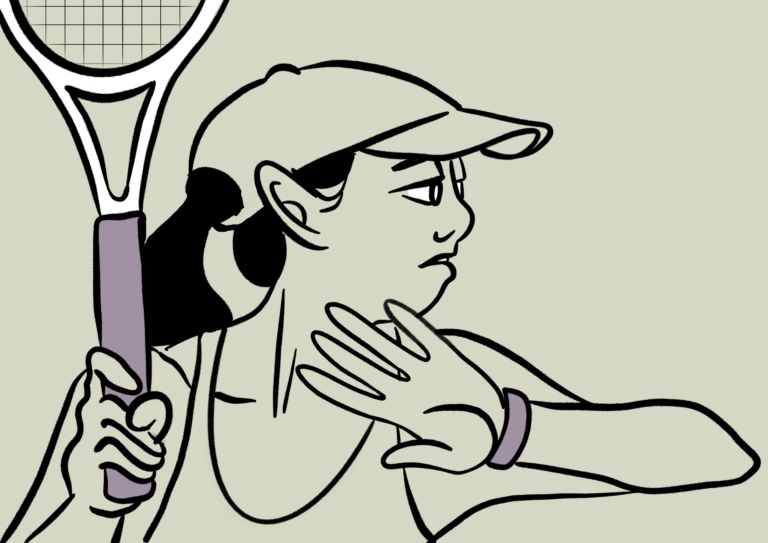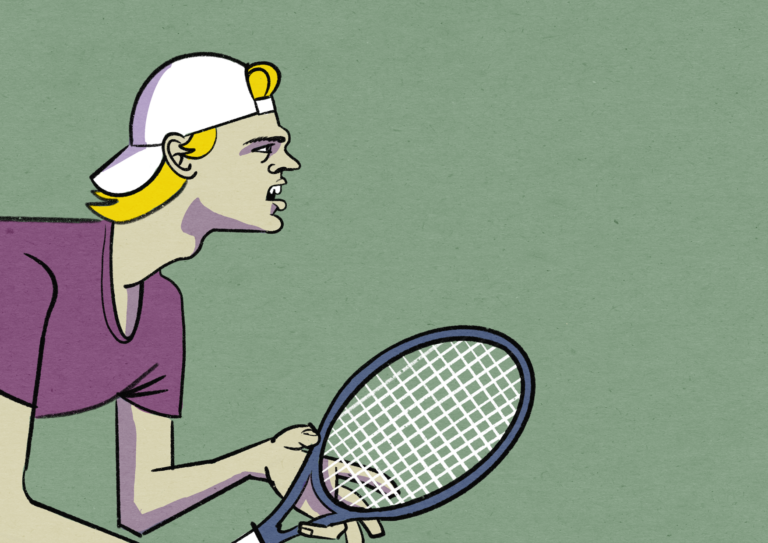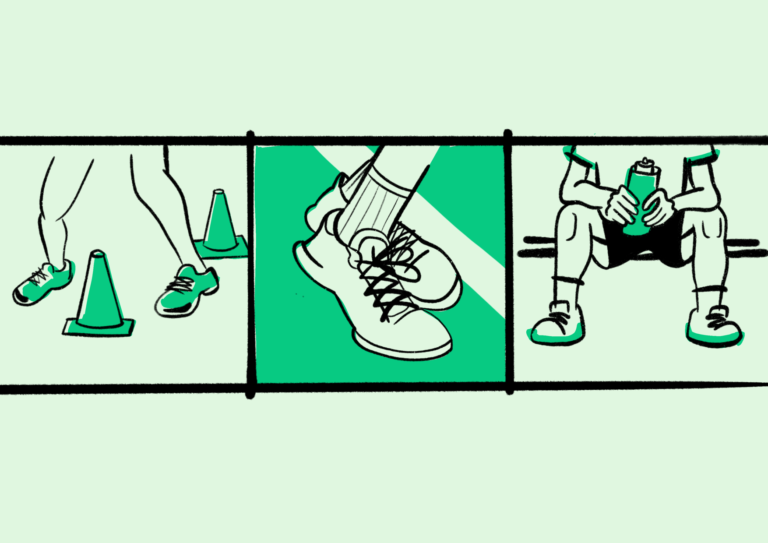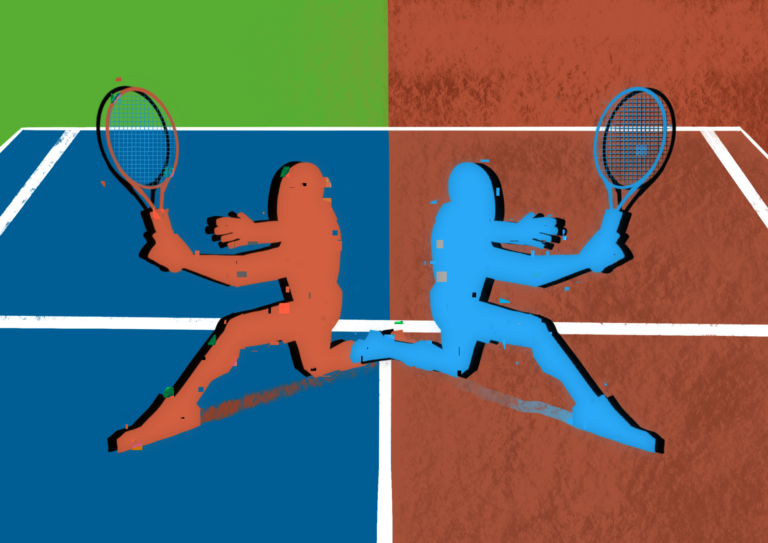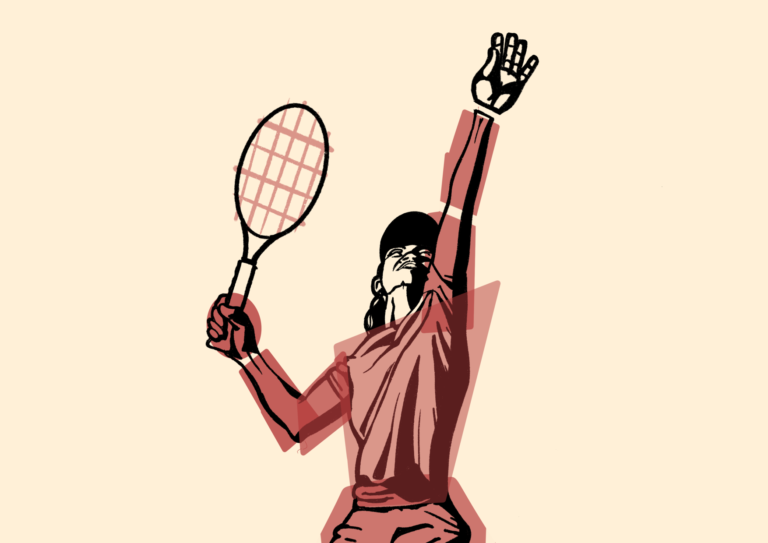Singles Strategy Tips to Win More Tennis Matches
Playing singles tennis requires endurance, agility, mental toughness, consistency, and hard work. Underlying all of what is required for singles play is strategy. Singles strategy exists in small forms; from just trying to get one ball back, to bigger, more complex ideas, such as trying to create patterns with your shots. By taking the time to implement a strategy on the court, you will elevate your singles game to the next level.
1. Dominate the net
To be successful in singles, you have to know what suits you and your abilities. Depending on your abilities, one strategy is to try and aggressively approach the net. As a beginner, it can be intimidating to play against confident net players. For the player at the baseline, this can disrupt their flow and confidence, leading them to lose focus and unforced errors.
To develop stronger net play requires practice and concentration. In order to use this style in singles play, you have to develop strong, deep groundstrokes that put your opponent on the defensive. This forces your opponent into hitting shorter shots close to the service line. When this happens, you can charge the net and try to hit an approach shot. This is the shot that allows you to make the leap from the baseline up to the net. This shot should be strong and aimed in a specific direction, ideally at the opponent’s weaker side. At the net, be sure to move your feet constantly, and stay in the “ready position” so that you can handle any returning shots.
This singles strategy allows you to quickly get on the offensive. Within the span of three shots, you can dominate and control the point. The secret to this strategy is implementing with caution. It is important to understand the difference of when to charge the net, or stay back. It’s not enough just to be an aggressive player, you have to know when to implement it.
2. No Free Points
As you have probably heard a million times, consistency is key. Tennis is a game of errors. When the parameters of the game revolve around the winning player being able to keep in play, the importance of consistency reveals itself. Sometimes, coaches will refer to good, consistent players as “walls”. This means that nothing gets by them–they just always get one more ball back. If you can keep up, and stay in the rally for longer, you will be able to win these matches. So, how can you become more consistent?
Ball Machine
If you have access to a ball machine, one of the best ways to build consistency is to practice hitting as many balls as possible. By hitting many balls in a row you can see where you tend to make mistakes and how confident you are with the repetition you’d find in a tough match. If you don’t have a practice partner, this is a great way to simulate a point and become more consistent.
After-5-shots
If you have someone to practice with, try avoiding hitting winners for as long as possible. It can be easy to hit a winner off a feed but that’s not an accurate simulation of a real point. Instead, try the after-5 method. Play to 10 points, but play the point as if no winner counts. Play until both players have hit five solid shots behind the service line. This way, you learn how to carry a point, versus trying to speed it up.
3. Move Your Opponent Around
Another singles strategy that you can implement is to move your opponent around. This works well when your opponent isn’t a great mover. Many beginners have trouble repeating good shots so they have to be in good positioning. By moving your opponent around, you prevent them from setting up to hit back a solid shot.
Many players get accustomed to hitting shots within their comfort zone. This is because for beginner drills, balls are fed in their wheelhouse, rather than on the run. It’s easy to hit a solid forehand or backhand from the middle of the baseline but much harder on the run. In order to do this, you can follow a few easy principles. Move them side-to-side with confidence and front-back with caution. If you know that you don’t have the opportunity to hit a solid drop shot, don’t. It is better to hit a shot with confidence and strength rather than a poorly placed drop shot that lets your opponent hit a winner.
If you get a shorter ball from an opponent who moves well side-to-side, however, this is an opportunity to drop shot them. Many beginner players do not feel confident at the net. In general, it is harder to move forward and backwards than it is side-to-side. Also, change directions with groundstrokes. Rather than only hitting to their backhand, as many players tend to do, switch it up. Even if one of their groundstrokes is better than the other, moving your opponent side to side will put them in a difficult position to hit the next shot and cause tired groundstrokes. This will challenge your opponent both mentally and physically.
4. Strong Service Game
A strong service game is key to success in singles. Even if you don’t think you’re physically strong or hit the ball particularly hard, this is a strategy you can implement. In singles, it’s all about capitalizing on your service game as a means of dictating the point from the very first shot.
When practicing, it is important to get your serving technique down. Only then should you start focusing on spot serving and trying to hit certain parts of the service box. Similar to moving your opponent around the court, singles is all about putting your opponent in tough-to-reach positions. A drop serve, a serve that goes out wide, or a serve into your opponent’s body all accomplish this. Through target practice, you can zero-in on these spots that are uncomfortable for your opponent. To practice with targets, you can use many household items–a full water bottle, a hoola-hoop for a bigger target, a cone or anything laying around.
Your second serve should also be incorporated into this strategy. Oftentimes, beginners are happy to just get the ball in for their second serve. In the long run, this isn’t a viable winning singles strategy because it sets up the opponent to either hit an easy winner or dictate the rest of the point. Shift your mentality from getting the ball in to incorporating spin or pulling the ball off the court. Once you implement this, you will start to feel more confident in your service game, and will transform your match strategy.
5. Play to Your Strengths
No tennis player is the same and there is no one-size fits all formulaic strategy. Your strengths depend on a multitude of factors. Age, technique, weight, mobility, mental toughness, command of the court, agility, etc. Maybe you’re nervous about your second serve, but you feel super confident at the net. Or, you have a big first serve, but prefer to stay at the baseline all day. Once you identify your strengths and weaknesses, you can curtail your singles strategy to fit.
How can you identify your strengths? It is important to have an objective party, such as a coach, friend, or hitting partner, assess you on the court. Does it look like you’re moving well around the court? Could your backhand use some work? Are your serves one-note? Another set of eyes help not only identify what you’re doing wrong, but what you may be able to slightly tweak.
If you don’t have someone in your life who can watch you play, use your phone! Prop your phone up on your side of the court on a bench, or in the fence, or even on the net facing you. Record yourself hitting, serving, and moving. Basically go through all the motions you would in a normal point. You will probably be able to pick out some issues yourself right away but a coach or fellow player will also be able to pinpoint technical and tactical improvements.
6. Active Feet, Good Positioning
There are simple yet crucial ways to achieve both–moving your feet, staying in ready position, and being on your toes. When your opponent is gearing up to serve, you should be in the ready position with your racquet out. For beginners, there is a tendency to stand flatfooted when awaiting a serve. If you do this, you will miss any serves that do not come directly to you, making you vulnerable to hitting a weak return or missing the shot entirely.
Another tip for staying active is not watching your shot. When you hit a good shot, there is a tendency to stop and admire it. Of course you should be aware of where your shot goes, but you’ll have issues if you pause to watch instead of recovering back to the center of the court.
Keep some small rules of thumb in mind when considering your positioning on the court. Don’t hang out in the area in between the service line and the baseline, infamously known as “no man’s land”. When hitting groundstrokes, try to stay further back, because it is always easier to move forwards than it is backwards. If you hit a cross-court shot, consider where they will most likely return it. Depending on their positioning, you will want to judge the likelihood of an attempted winner down the line or a shot they are just attempting to get back in play.
Your feet are your best friend in singles, and if you can train one thing, they may be the most important. If you can’t move with agility around the court, you can’t execute any strategy. For simple ways to improve your footwork and your agility, you can practice short sprints, simple footwork patterns on YouTube, or various other footwork drills. Many players can hit great shots if they are in the proper spot, but if they are not, their abilities are challenged.
7. Creating Patterns
It is a big step to go from just playing to playing with strategy. After all, getting down technique on your shots is tough enough. So incorporating ball placement in certain positions on the court can become difficult, but it’s the first step in creating patterns on the court. What does this mean? This means trying to place your shots in strategically efficient zones and creating beneficial patterns to win the point. Ball placement is not as important as the shot itself, so if you aren’t in a position to make a tactical shot just focus on hitting a solid one.
One way to start creating patterns as a beginner is to utilize two-shot patterns. This is contingent on whether you are serving or returning, but this is one way to decipher how your opponent is playing. Use a two-shot pattern to see how your opponent moves to hit a shot on their non-dominant backhand and then the following shot into their body. This way, you can see how your opponent moves and plays on their classically weaker side. You may discover it is actually a stronger side for them.
If you feel confident with your groundstrokes, go cross-court repeatedly, to move your opponent around. If you feel as if you can get an angle on the ball, this is a good way to pull your opponent off the court. Use this with caution–if you feel as though your positioning is weak, and you’re struggling to hit an accurate cross court shot, do not force it because it could leave you vulnerable. Cross court shots also take advantage of the middle of the net, which is the lowest part to clear.
The pattern, “cross-cross-down” is a pretty simple but useful pattern. It consists of two cross court shots and then one down the line. Though only three shots, this pattern throws off your opponent’s movement. Once they get used to moving side to side in a rhythm, their body wants to stay in that pattern, and they will be prepared for another cross court shot. By hitting your third shot down the line, you’re changing their mental flow and causing them to hit a weaker shot. It’s enough to just hit a solid down the line shot as opposed to a high velocity attempted winner.
8. Mental Toughness
Tennis can be a very challenging sport because it requires significant mental toughness. After all, when you are playing singles, you are alone on the court. You can’t blame any mistakes on teammates or outside forces. So learning how to handle yourself during pressure situations is crucial to being a successful tennis player. Keeping emotions in check while facing adversity, mental strength during long tiresome points, the solitude of decision making alone on the cour. These are just some of the mental hurdles for singles tennis players. Thankfully, there are ways to hone mental skills as well.
One way to slow your mind down during a match is to develop a routine between points. Whether this is bouncing the ball three times before you serve or heading to the back of the court and wiping your face with a sweat towel, find a way to slow your mind down. This way, even after a tough point, you are able to reset and find stability and confidence.
When you get into a rut, or miss a couple easy shots, it can feel nearly impossible to regain your mental toughness. Especially in a sport like tennis, it is important to make sure that you have the proper mentality. This means being confident and exuding confidence. In order to do that, visualize success. Visualize yourself making the shot, winning the game, and finishing the match successfully. This means positive self-talk, telling yourself you have the tools and the confidence to win the match.

